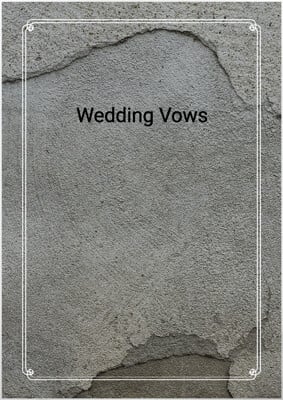How to Tailor the Document for Your Need?
01
Create Document
Click "Create Document" button and the document will be prepared with your account details automatically filled in.
02
Fill Information
Please fill in any additional information by following the step-by-step guide on the left hand side of the preview document and click the "Next" button.
03
Get Document
When you are done, click the "Get Document" button and you can download the document in Word or PDF format.
04
Review Document
Please review the document carefully and make any final modifications to ensure that the details are correct before publication / distribution.
Document Preview
Document Description
The document titled 'Record Oral Family History - Life of Elderly' is a comprehensive questionnaire designed to capture the life story and experiences of an elderly individual. This document is of utmost importance as it serves as a valuable tool for preserving family history and passing down generational knowledge. It allows future generations to gain insights into the life, upbringing, and experiences of their ancestors.
The document is divided into several sections, each focusing on different aspects of the individual's life. The first section pertains to personal information, such as the individual's full name, date and place of birth, and specific circumstances surrounding their birth. This section aims to establish a foundation for understanding the individual's background.
The subsequent sections delve into the individual's family history, including details about their parents, siblings, and other relatives. It explores the individual's relationship with their family members, their parents' occupations, and any significant memories or advice received from them. This section provides a comprehensive picture of the individual's familial connections and influences.
The document also covers various aspects of the individual's childhood and home life. It asks about the towns or suburbs they lived in, their childhood addresses, the characteristics of their neighborhood, and the layout of their house. Additionally, it explores their favorite rooms, meals, toys, and activities during their formative years. This section aims to capture the essence of the individual's upbringing and the environment in which they grew up.
Special occasions and traditions are another significant aspect covered in the document. It asks about how birthdays and Christmas were celebrated in the individual's family, including details about decorations, gifts, and family traditions. It also inquires about other festivals, such as Easter and New Year's, and any unique memories associated with these occasions. This section provides insights into the individual's cultural and religious practices.
The document further explores the individual's experiences during vacations, different seasons, and outings. It asks about family holidays, trips, and activities undertaken during summer and winter. It also inquires about any memorable experiences at the beach, in the snow, or during other outdoor adventures. This section aims to capture the individual's recreational activities and their relationship with nature.
Incidents and personal experiences are also covered in the document. It asks about any accidents, fires, or natural disasters the individual may have encountered. It explores their memories of thunderstorms, power blackouts, and encounters with animals. Additionally, it inquires about any injuries, illnesses, or medical experiences the individual may have had. This section provides a glimpse into the individual's resilience and ability to overcome challenges.
The document also delves into the individual's educational journey, including their experiences in primary school, high school, and potentially college or university. It asks about their favorite subjects, teachers, and extracurricular activities. This section aims to capture the individual's academic and social development during their formative years.
The final sections of the document focus on the individual's transition into young adulthood, marriage, and parenthood. It asks about their first romantic relationships, dates, and proposals. It explores their wedding day, including details about the ceremony, attire, and honeymoon. Additionally, it inquires about the individual's living arrangements and job at the time. This section provides insights into the individual's personal growth and milestones.
Overall, the 'Record Oral Family History - Life of Elderly' document is a comprehensive questionnaire that covers various aspects of an individual's life. It serves as a valuable tool for capturing and preserving family history, providing future generations with a deeper understanding of their roots and heritage.
How to use this document?
1. Begin by explaining the importance of preserving family history and the significance of the document.
2. Introduce the document as a comprehensive questionnaire designed to capture the life story and experiences of the elderly individual.
3. Explain that the document is divided into sections, each focusing on different aspects of the individual's life.
4. Encourage the individual to provide detailed and specific answers to each question, as this will enrich the family history.
5. Start with the personal information section, asking the individual to provide their full name, date and place of birth, and specific circumstances surrounding their birth.
6. Proceed to the family history section, asking about their parents, siblings, and other relatives. Encourage the individual to share any significant memories or advice received from their family members.
7. Move on to the childhood and home life section, asking about the towns or suburbs they lived in, childhood addresses, and characteristics of their neighborhood. Inquire about their favorite rooms, meals, toys, and activities during their formative years.
8. Explore special occasions and traditions, asking about how birthdays, Christmas, and other festivals were celebrated in their family. Inquire about decorations, gifts, and family traditions associated with these occasions.
9. Discuss vacations, seasons, and outings, asking about family holidays, trips, and activities undertaken during summer and winter. Inquire about memorable experiences at the beach, in the snow, or during other outdoor adventures.
10. Cover incidents and personal experiences, asking about any accidents, fires, or natural disasters the individual may have encountered. Inquire about their memories of thunderstorms, power blackouts, and encounters with animals.
11. Explore their educational journey, asking about their experiences in primary school, high school, and potentially college or university. Inquire about their favorite subjects, teachers, and extracurricular activities.
12. Discuss their transition into young adulthood, marriage, and parenthood. Ask about their first romantic relationships, dates, and proposals. Inquire about their wedding day, living arrangements, and job at the time.
13. Encourage the individual to provide any additional information or stories they feel are important to include in their family history.
14. Conclude by expressing gratitude for their participation in preserving the family's heritage and emphasizing the value of their contributions.
Not the right document?
Don’t worry, we have thousands of documents for you to choose from:









